Algol
(bright variable Star Beta Persei)
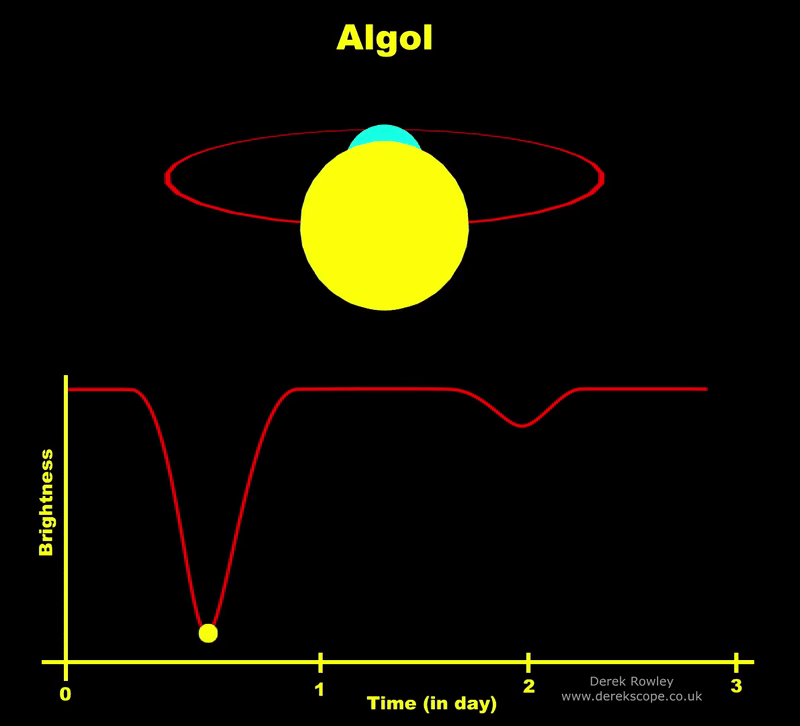
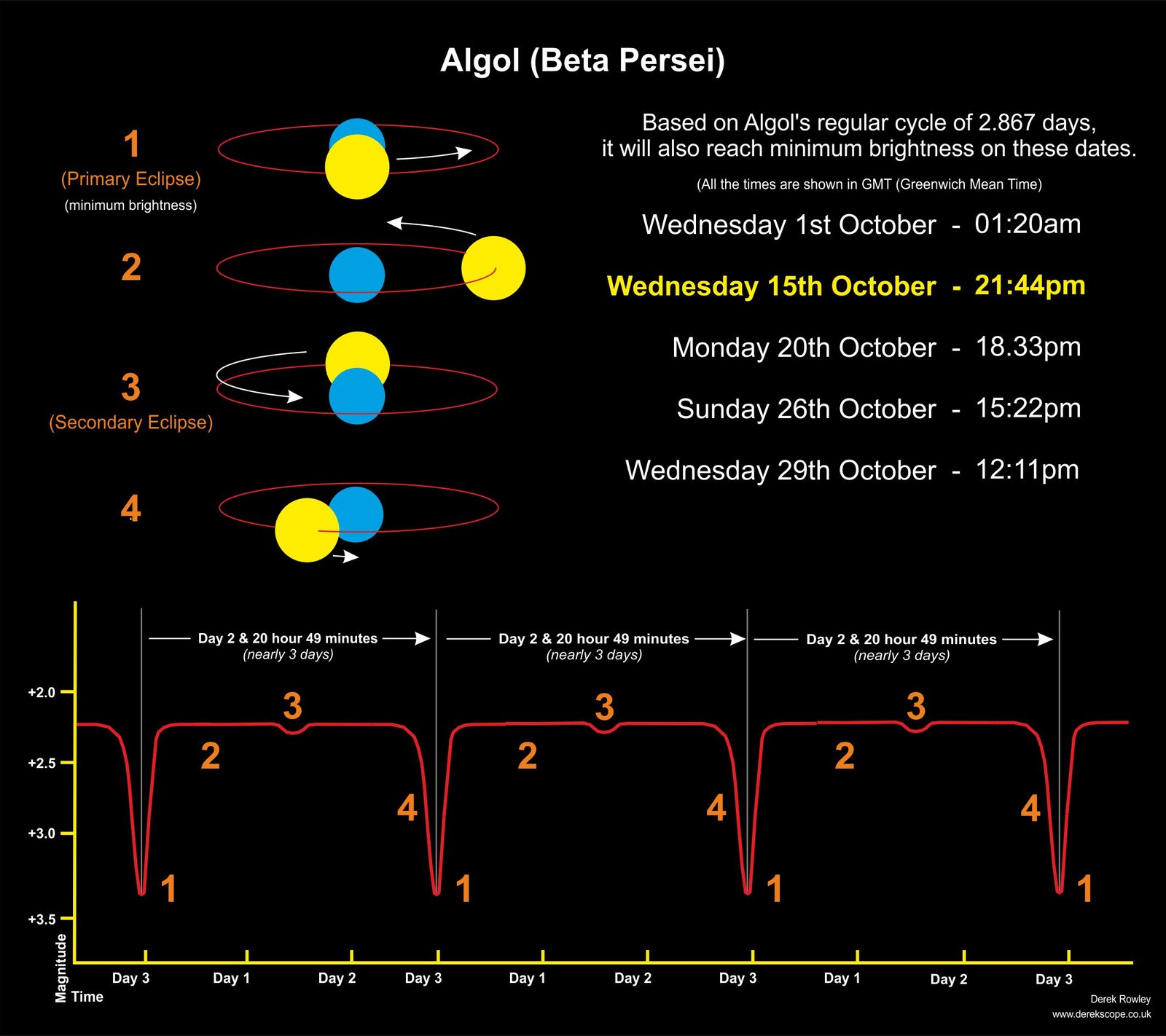
- The bright variable Star Beta Persei (Algol) reaches minimum brightness.
o - This variable star in Perseus varies from its brightest at magnitude +2.1, dropping to +3.4.
o - Even when dimmed, Algol is still visible to the naked eye.
oooo
oooo
How to find Algol
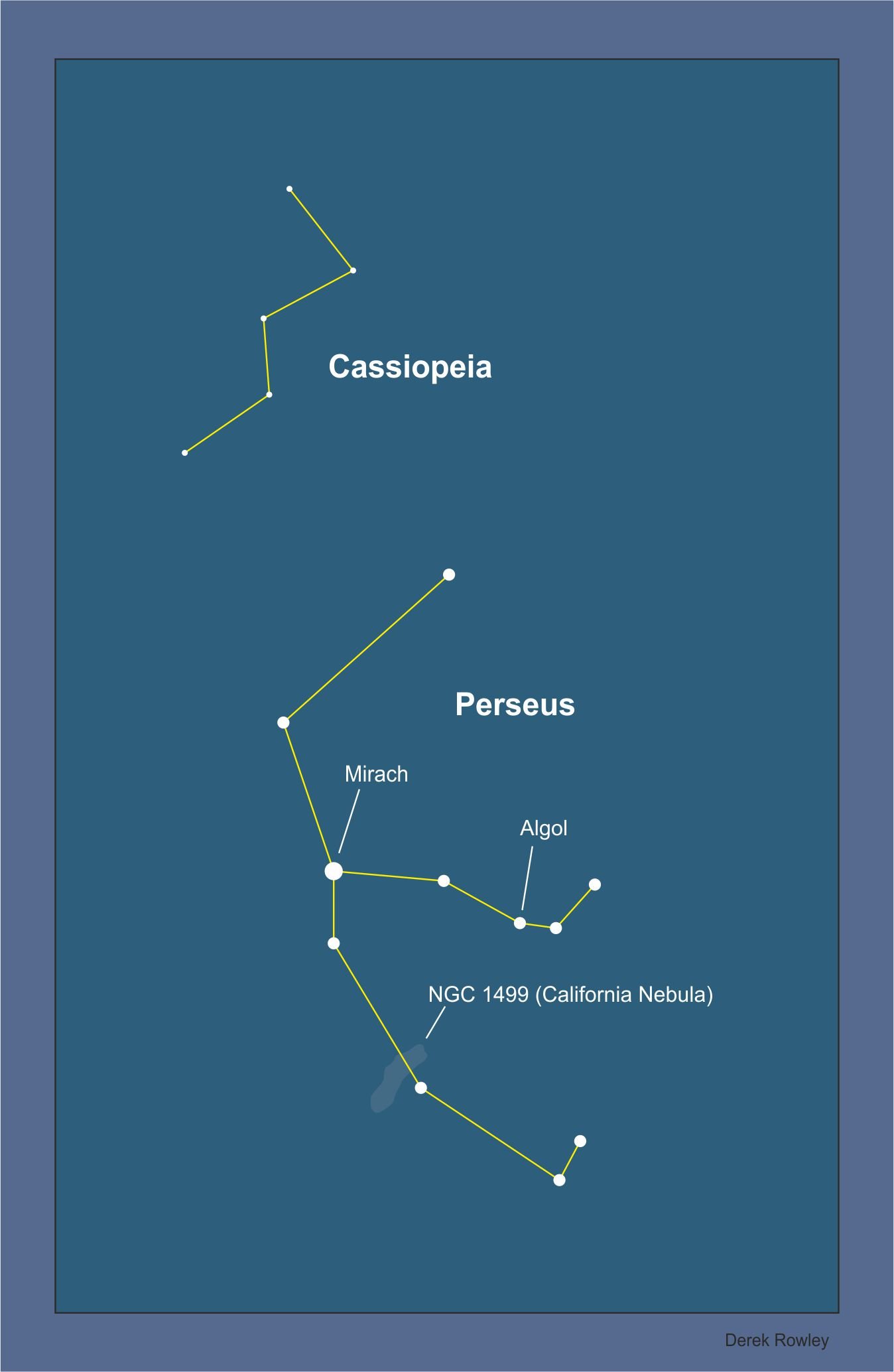
oHow to find Algol in Perseus?
oooo
- Locate Cassiopeia
Find the distinct W or M shape of the Cassiopeia constellation, which is in the northern sky.
o
o - Find Perseus
Look below the Cassiopeia asterism to find the constellation Perseus. It has a distinctive curve of stars known as the Segment of Perseus.
o
o - Spot Algol
Within Perseus, look for the two brightest stars, which are Mirfak and Algol.
Algol is a prominent, naked-eye visible star.
o
o - Best viewing time
In the Northern Hemisphere, the constellation is most visible during the evening hours from autumn to spring.
o
o - Neighbouring constellations
The constellation Perseus, and therefore Algol, is bordered by several other constellation:
o- North: Cassiopeia and Camelopardalis
- South: Aries and Taurus
- East: Auriga
- West: Andromeda and Triangulum
oooo
oooo
oooo
Deaf astronomer John Goodricke
LumoTV – Documentary (2010) as part of the Deaf History series – John Goodricke
o
- In this episode, reporter Sebastian Cunliffe tells us about Deaf astronomer John Goodricke, who changed how we view the skies in his short life.
o - Having been born in Holland, Goodricke moved to the UK for his education, and settled in York. There he made a close friendship with Edward Pigott, a talented astronomer.
o - He soon made a scientific breakthrough which won him the prestigious Copley medal, and despite dying young, his methods are still used 200 years later.
oooo
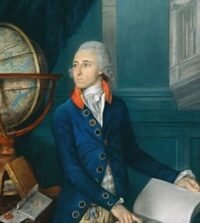
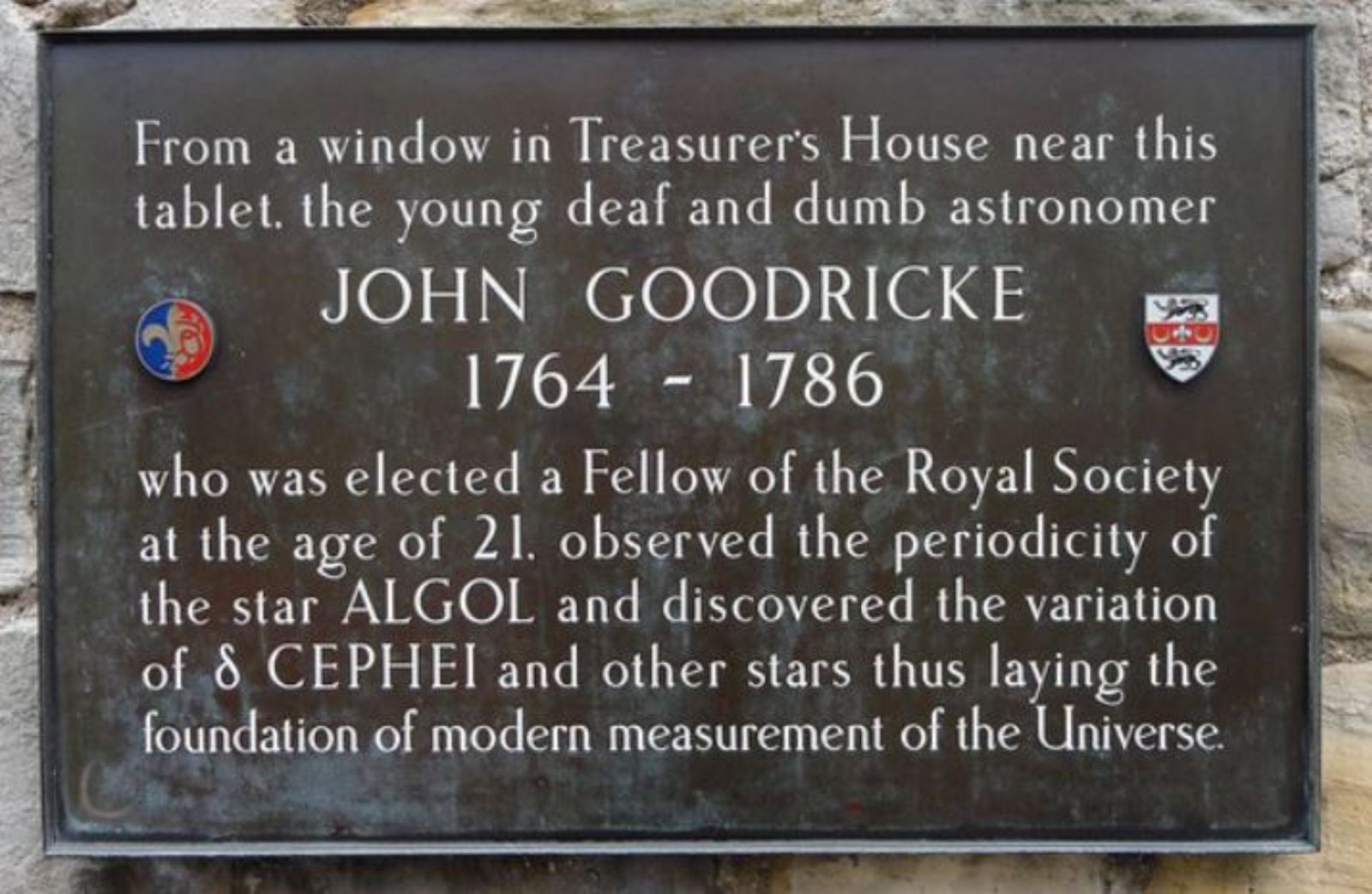
- John Goodricke’s commemorative plaque is located outside Treasurer’s House in York.
o - Known for his observations of variable stars like Algol.
o
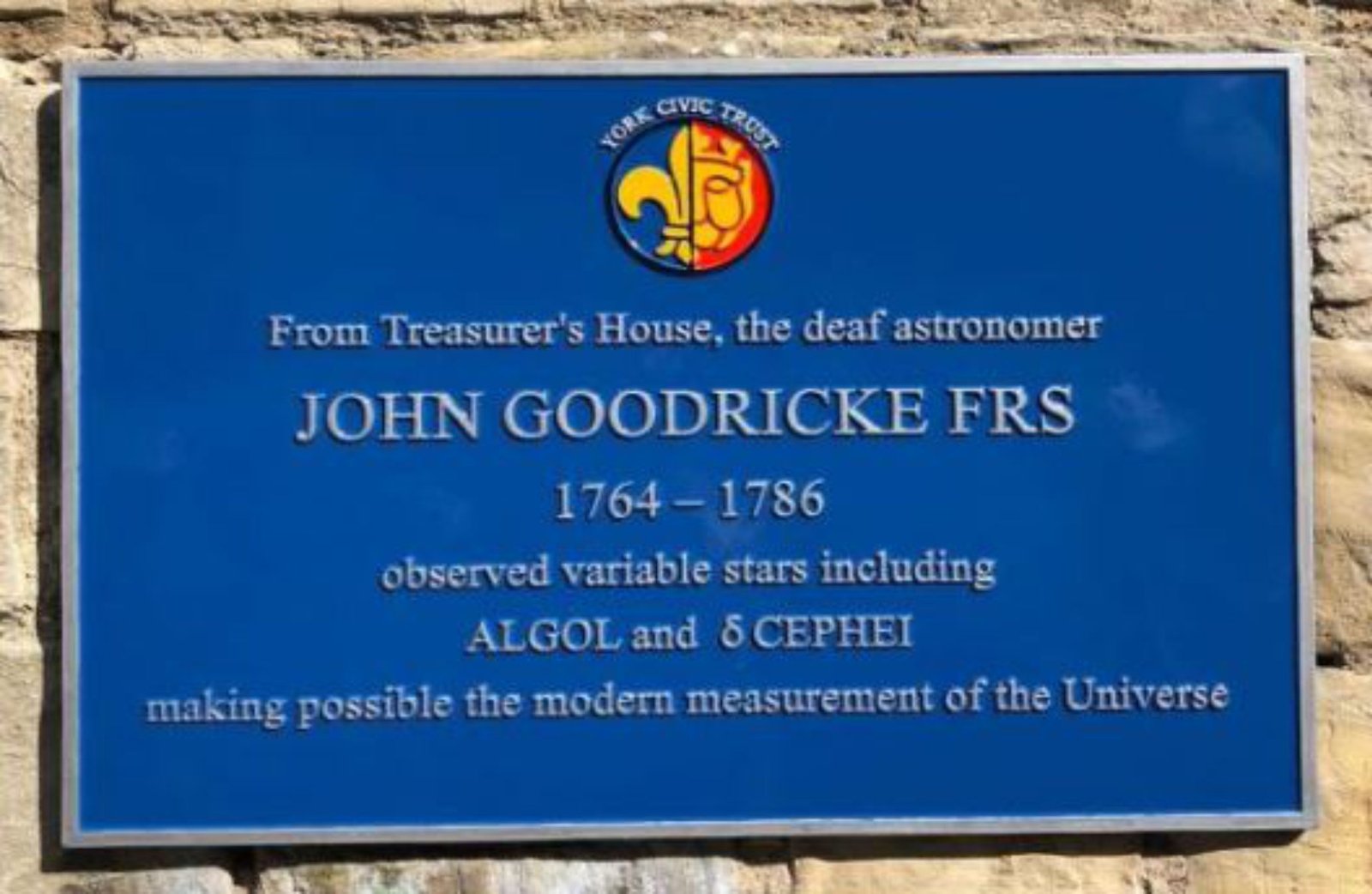
- Read More
– Revised John Goodricke Plague installed.
o
– wikipedia (John Goodricke)
oooo
oooo
oooo
Back
